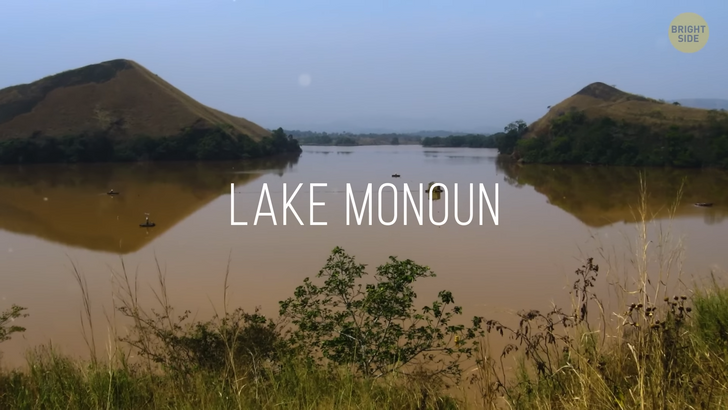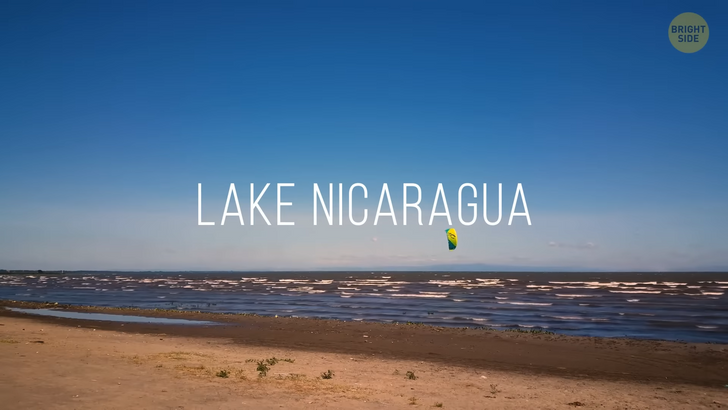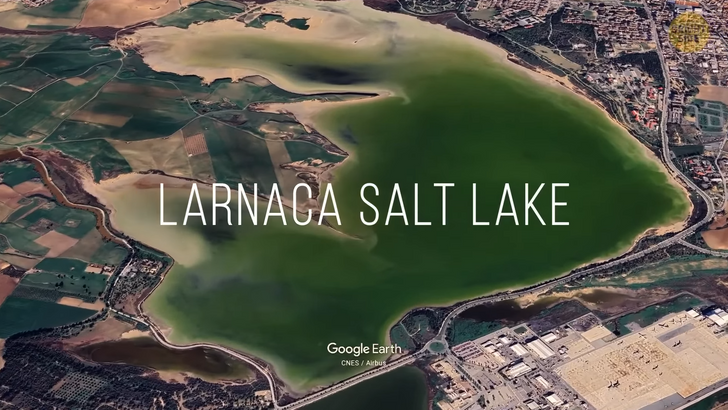18 Guests Who Forgot They Weren’t the Main Character at Someone Else’s Wedding


Hmm. On the outside, the surface of this lake looks like the aftermath of a disaster. Empty tree trunks spike out of the turquoise waters. The lake is surrounded by mountains, making it a quiet but unsettling place. But those who dare to swim under these dangerous waters will soon discover a whole new world!

This isn’t the beginning of a fairy tale, it’s the actual story of Kaindy Lake, located in Saty, Kazakhstan. Back in 1911, an earthquake caused a major landslide in this location. The valley created eventually filled up with rainwater, practically submerging the forest. The trees that are located above the waters might look very sad, but beneath the surface, they remind you of an underwater forest.
Since the waters are crystal clear most of the time, you can still see this fascinating view even from its shores. The ice-cold water makes this lake so tricky and, at times, even dangerous. And don’t forget about all the algae, plants, and submerged trees that can rapidly become risky obstacles.
Hey, I enjoy a steamy hot bath, but this boiling lake I’ll tell you about now is really the stuff of scary dreams! It’s located on the Caribbean Island of Dominica, and its waters have temperatures between 180 and 197 degrees Fahrenheit. And that’s just around the edges since no one has ever dared to reach the middle of the lake to measure its core temperature.
It’s true that the heat can go down from time to time, but you never know when these waters may start to boil again. The place is also dangerous because of the gases it releases, such as carbon dioxide. It doesn’t smell nice, trust me, but that’s mostly because of the sulfur stuck in the steamy air.

This seemingly calm lake also carries a dangerous surprise. Lake Monoun is located in West Province, Cameroon. It’s one of the few erupting lakes on the whole planet — similar to a volcano. And, most of the time, it does so without any warnings.
Its last eruption dates back to 1894 when it caused serious damage. The chemical mechanism of such lakes works like a can of soda that you shake before opening: there are risky gasses on the bottom of the waters, so any disturbance on the surface may trigger their eruption.
Natron Lake in Tanzania may be beautiful to watch because of its unique reddish coloring, but it’s definitely not a place you’d want to take a swim in. While the water is extremely salted, it also combines with algae — which, by the way, are responsible for the coloring. And that’s not even the riskiest thing about it! Natron lake has pH levels so high that they become corrosive.
If you dampen a piece of dyed material in this lake, it will soon be stripped of its color. These high levels of acidity can also cause serious problems to the human skin. It’s not all bad for some creatures, as Lake Natron is the only home to over 2.5 million small flamingos. These acidic and brackish waters support their survival, so it’s no wonder they like to stick around.

Lake Nicaragua’s danger factor has less to do with chemistry and more to do with its inhabitants. It’s located on the border of Costa Rica and Nicaragua and is the largest freshwater lake in Central America. When you first look at it, you won’t think it can be dangerous, but because of the bull sharks inhabiting it, I wouldn’t recommend taking a swim!
Sharks tend to be unpredictable and, at times, intimidating creatures. Plus, they will eat everything if needed. Scientists initially believed this species of shark was only found in this lake. But they soon discovered that people had seen the same sharks in the Caribbean Sea. These astonishing creatures not only cross a distance of over 120 miles to get here but can also adapt to freshwater, something not all fish can do.
Belize’s Great Blue Hole may seem alluring to divers. I mean it has a gorgeous deep blue color, and it’s pretty close to the mainland — about 62 miles. The problem is that beneath the surface of these tranquil waters is a mixed-up series of tunnels, which contain many types of coral and other wildlife. These caves are what make diving through the Great Blue Hole tricky.
More so, specialists discovered that deeper into the waters there are fewer and fewer creatures. Why? Because of a hidden layer of hydrogen sulfide that spans over the whole width of the sinkhole. Since there’s no oxygen, no creature can ever survive this deep into the hole.

Lake Lanier is the largest lake in the state of Georgia. It has a lot of visitors each year, about eleven million, so that’s about the same number as visiting the Louvre Museum in Paris. Despite its popularity, a lot of accidents happen on this lake, and nobody knows for sure why.
One of the explanations may lie beneath the surface of this mysterious lake. There’s a lot of debris and rubble in there, along with random objects that have been tossed in, like boats, lawn chairs, and even fishing wire. All this creates a tricky underwater obstacle course. With the added low visibility on the surface of the lake, this place can become risky to navigate.
Another one of those lakes that look like someone might have overdone with editing is the Grand Prismatic Spring, located in Yellowstone National Park, which stretches into the states of Wyoming, Montana, and Idaho. Swimming here is completely prohibited: it’s 189 °F in the center, almost close to boiling temperatures, and the outermost ring reaches around 131 °F. Hence, the colors: since the center of the water is way too hot for any life to make it, there’s nothing clouding the surface. The lack of any living organisms here creates that vivid blue that looks almost painted over.

On the small Mediterranean island of Cyprus, there’s not a lot of rain during the summer. That’s why some bodies of water here become so dry that in certain areas, they get covered in a layer of baked salt. It’s the case for the Larnaca Salt Lake.
Don’t be fooled by the eerie landscape. These lands can easily become a trap. That’s because it’s easy to get confused about what’s actually a dry surface and what’s just a thin layer of salt on top of water or mud. More so, underneath the crust are salt crystals which can cause problems for people’s skin.
Samaesan Hole is one of the most dangerous places to swim in the whole of Thailand. It’s because it’s very deep — reaching 280 feet — and gets extremely dark. At certain points, as divers get lower, they can even reach places with zero visibility. No wonder a lot of people get confused and can’t seem to find their way up anymore.
The largest lake in Africa and the third-largest lake in the entire world is called Lake Victoria. Not all of its waters are unsafe for people, but some regions can rapidly cause problems. Why? Partially because it has its own isolated weather system. And that makes the weather really unreliable. It can go from bright and sunny to terrible in a matter of seconds. I mean, who would want to get caught swimming in the middle of a storm, right?











